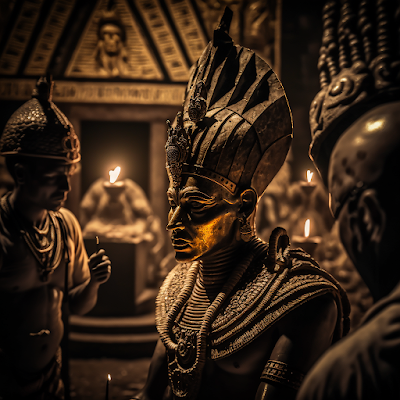The Search for a Unified Theory of Everything: Exploring the Four Fundamental Forces of Nature
Introduction
The question
of whether the four fundamental forces of nature are separate and distinct or
ultimately unified at a deeper level has been a topic of debate for centuries.
While several theories have been proposed, none have yet been able to
completely unify these forces. This article will explore the current theories
of unification and the challenges scientists face in developing a complete
theory of everything.
Theories of Unification
Einstein's
theory of general relativity: Describes gravity as the curvature of spacetime
caused by the presence of matter and energy. However, it does not account for
the other three fundamental forces.
The Standard
Model of particle physics: Describes the strong and weak nuclear forces, as
well as the electromagnetic force, in terms of the interactions between
subatomic particles. However, it does not include gravity.
The theory
of everything, also known as the grand unified theory (GUT): Attempts to unify
the four fundamental forces of nature into a single, coherent framework.
Challenges Facing the Development of
a Theory of Everything
The vast
differences in strength among the four fundamental forces: For example, the
strong nuclear force is approximately 10^38 times stronger than the
gravitational force, making it difficult to imagine how the forces could be
unified.
The
different mathematical frameworks used to describe the forces: For example,
general relativity is described by the mathematics of differential geometry,
while the Standard Model is described by the mathematics of quantum field
theory.
Proposed Solutions to Unify the Four
Fundamental Forces
Supersymmetry:
The concept of every particle having a superpartner with different properties
could unify the four fundamental forces.
Extra
dimensions: The concept of our observable universe being a subspace of a
higher-dimensional space-time could also unify the fundamental forces.
Conclusion
Despite the
challenges faced in developing a complete theory of everything, many scientists
believe that the forces ultimately merge into one. The quest for a theory of
everything continues as scientists explore new ideas and test new theories.
While the question of whether the universe's forces merge into one is still an
open question, it is an active area of research in both theoretical and
experimental physics. As scientists continue to deepen their understanding of
the universe, the hope is that a unified theory of everything will one day be
developed.














Comments
Post a Comment